Introduction
This study examines the benefits of designing gardens for interior office buildings to reduce office stress factors that adversely impact employee productivity. The goal is to increase performance in highly stressed business environments. Organizations should recognize that negative stress factors in office environments that cause poor employee performance are caused by high levels of noise, dust, cold, unpleasant odors, heat, and poisonous substances negatively on performance. This has been demonstrated Aramco’s different office designs in Saudi Arabia. Small amounts of stress are beneficial to the body, but extreme sustained stress wears the body and decreases the body’s ability to cope with the demands placed on an individual in the working environment. Negative stressors can be either psychological physical. Physical strain often causes colds, aches, and palpitations while psychological stressors include depression, anxiety, feelings of futility, passiveness/aggressiveness, self-esteem, loss of concentration, and anxiety. However, this is a double edge sword because the outcome could either be desirable or undesirable. It should be understood that employees working in busy business office environments lose a significant amount of time due to office-related negative stress factors that translate into low productivity and poor performance outcomes. Performance is measured against key metrics and the degree or extent to which business objectives or measurable goals of an organization have been achieved. While different organizations have varying performance measures, the key performance indicators used to measure job achievements include customer satisfaction and positive feedbacks, positive return on investment, employee satisfaction, profitability of customers, and net positive increases in profits.
Typically, stress is a concept that is widely explored in the medical and sociological contexts. In each case, stress is viewed as that which causes mental or emotional strain. That often results in the restraining effects on the performance, actions, or activities of individuals in the working environment. Specifically, this study will focus on the removal of stress factors that negatively impact employee performance working in private company office environments, which often have similar attributes to those in the public sector. Private companies have a wide variety of office environments and associated stress factors that impinge on the employee performance either negatively or positively. The key office environment stress-related jobs include customer care services, medical office, insurance claims, human resources, administrative assistants, receptionists, managerial, drafting, and accounting. It is noted in the study that specific stressors are triggered by the nature and characteristics of the jobs. In this discourse, the study focuses on an office environment that consists of a wide range of employees who including the administrators and their assistants. Administrators are involved in processing workers, coordinating employees and performing related tasks, payroll training, installation of software, organizing office operations, and attending meetings among others. These jobs are characterized by demanding tasks that frequently generate varying degrees of stress in the office environment.
Various methods have been devised by organizations to deal with stress and address the sources of stress, particularly negative stressors in the office environment and one specific approach that is been tried by a wide variety of organizations in many countries such as the U.S.A. among others is incorporating office gardens into the office environment. The goal is to create an environment to ensure the wellness due to the positive effects of exposure to the green matter due to office gardens. Not all organizations have bought the idea of office gardens, but many private business organizations have put the idea to the test and discovered a wide range of benefits. This is because, historically, office gardens have been used for healing by creating a therapeutic environment. Designing gardens into the office spaces impinges positively on psychological responses that translate into higher employee productivity with higher economic benefits. Deductively, the gardens were used to create a meditating environment that was deemed to provide quiet contemplative spaces by taking advantage of natural views and plants among others. In this case, the gardener tries to link attitude with performance that is evoked by the environmental factors. Here, the level of response has a curvilinear relationship with one’s performance outcomes. Office gardens and spaces should be designed to minimize stressors that lead to negative or positive emotional responses.
Often, negative stress results in negative emotional feelings that sometimes lead to physical harm. Such observations have been seen in many organizations that try different approaches to reduce negative stress by re-planning the working environment to induce an environment that stimulates positive cognitive responses. Thus, the perception about removing negative stress and increasing productivity is observable in both modern and classical organizations. When this fact is reviewed, a linear relationship between the level of stress and productivity emerges. Already, the concept of gardens in office environments is quickly being adopted by Google and Netsoft besides it gaining popularity in many countries such as Saudi Arabia. In Saudi Arabia, the idea has been adopted by King Abdullah international gardens that consist of a wide range of scientific, botanical, and physical gardens. Pryce Hera’a Desk Office gardens in Saudi Arabia provide real examples of the momentum that has gained in the adoption of office gardens for various purposes.
That is the way Google has designed the working environment to positively address the mental, physical, spiritual, and emotional wellbeing of the employees using office gardens. Similar approaches were used by the Chinese and Japanese classical designers to aesthetically appeal to the occupants of buildings to create positive psychological engagements with them. When such engagements happen, it leads to positive experience that inspires commitment to work leading to better productivity. Reports on the use of medieval Gardens show that people appraise the office environment to develop certain attitudes, which lead to the responses observed among them. In this case, positive emotional responses that result from external stimuli are caused by people’s appraisal of the working environment. Some examples of the office environments that incorporated the aspects that elicit psychological responses due to external stimuli from interior gardens include the Spanish, Japanese Seison-KaKu, and Islamic. Such an approach is often used to remove stress and allow natural healing to progress unimpeded. The complex relationship between psychological responses and highly stressed work offices is worth tapping into for better productivity. That is because negative stress happens due to an employee’s negative perceptions and attitude towards the working environment. Anixter International is one such example that shows how negative cognitive effects lead to negative stressors and the adverse effects it plays on employee productivity. Workplace sources of stress such as unfamiliarity, duration, suddenness, and eminency that affect employee productivity have to a significant extent can been minimized. This is often done by growing and cultivating plants in the office to add functionality and decoration to impinge the psychological response that leads to positive attitudes and a relaxed working environment. Such investments are costly but justified because the economic contributions of the human asset in an organization are more than 100 times the total operating costs of a building.
Recent efforts by global companies in the USA, particularly Google and Apple have been to invest in designing buildings the office environment to improve air quality, emotional wellbeing, reduce stress, and make the office environment aesthetically appealing. An important aspect here is to use biophilic elements to induce positive personal feelings that have positive effects on negative stress, and likely increase one’s involvement at work for better productivity. Such a concept can be adopted by different many companies in Saudi Arabia for better employee working environment that translates to higher involvement in work tasks and increased productivity. The biophilic elements give rise to positive human emotions feelings and intellectual contact with nature that arouses positive psychological responses leading to higher concentration at work.
We learn from historical buildings that have incorporated gardens into their office spaces and other aspects such as lighting that such an approach enhances employee productivity by stimulating employees to carry out their activities in better ways in comparison with bad lighting which causes stress of the eyes leading to increased stress. Modern offices accommodate gardens that are designed with natural shapes and forms, better lighting, effectively utilized space, environmental features such as water, color, and plants to reduce stress. This increases human satisfaction and wellbeing in a highly productive environment. A typical example is the Nintendo of America that incorporates the natural elements into the organization’s office gardens. It inhibits those factors that lead to increased stress levels and enhances those with positive effects on employee productivity. The focus of this study is to show the benefits of designing interior gardens for office buildings in increasing the productivity of employees in highly stressed work offices.
Objectives of the study
- The Psychological impact Theory and Interior Garden Design
- The Role of BREEAM in Building Sustainability
- Benefits of Designing Interior Gardens for Office Buildings
Importance of the topic to me
The importance of the work to me has its foundation on an observation I made at my place of work the This topic is important because it provides directions of how to manage stress by designing interior gardens that bring nature and people close together, who are business users in highly stressed work offices. By creating gardens with plants and other elements that resonate well with the psychological effects of employees at the place of work, it is possible to reduce the sources of stress as explained by the psychological impact theory on the aspects of the design environment to enhance employee productivity. The study shows that providing workers with unlimited access to nature while in the office or in medical setting with patients such as a hospital positively improve their learning, healing, stress reduction, and emotional well-being. This has typically been implemented by the Palm Beach Community College considering the health and safety needs of the students. The topic shows how productivity in the context of better job outcomes depends on the level of involvement of the people in job-related activities, which depends on the resulting attitude, persuasion, immediacy, and supportiveness. Productivity is a measure of the ratio of inputs to outputs such that when the outputs increase significantly over inputs, then productivity is said to increase. Inputs could be in the form of effort, time, equipment cost, and staff attributes. Output could be in measures in terms of the quality and quality attributes of products, services, and ideas. However, in reference to the business operations of an organization, productivity embeds achievement of business targets such as staff utilization and target incomes.
Thesis Statement
Many organizations in the world as well as in Saudi Arabia today endeavor to cultivate positive office working environment aimed at reducing sustained and multifactorial negative stressors that lead to ill health and negative effects on employee productivity and overall organizational performance as well. Many organizational office designs have not proved to be effective due to the imbalance between the demand to fulfill office duties and address employee cognition and emotional demands. To counter the problem, this study demonstrates that the modern trend of integrating office environments with gardens into the office environment has both psychological beneficial for the removal of negative stress and its adverse effects on productivity, an approach that fulfills the global BREEAM building standards as evidence by Google’s new Australian headquarters in Pyrmont opposite Star City Casino and Opryland Hotel, Nashville TN.
Literature Review
The Psychological impact Theory and Interior Garden Design
Often, the effects of interior gardens in highly stressed work offices have been explained by the Psychological impact Theory. In theory and practice, negative stress resulting from highly stressed work offices have high positive correlations with human and economic costs such as decreased job satisfaction and employee health leading o high employee turnover. This has been exemplified by business organizations in the UK that have incorporated gardens into office spaces consisting of biophilic elements to improve employee health and productivity. Designs can be tested on innovative environmental systems using two frameworks; the healing potential of the office environment for the employee and the Balanced Score Card to communicate to the management the economic value of gardens occupying some office space and employee productivity. If an office incorporates the elements of ambient environmental conditions and furniture layout design it is possible to influence the emotional states caused by highly stressed people by reducing negative stress leading to positive psychological responses. Examples of the such effects have been demonstrated by the Deloitte Center for the Edge, a company that has endeavored to create a healthy and more productive environment showed that cultivating worker passion was the could be achieved by incorporating various elements into their office gardens. Such offices designed with gardens that incorporate the biophilic elements must go through a process to achieve an effective work environment.

This is a process that incorporates different goals. The first goal is to define high-impact challenges that constitute the stress factors that inhibit the productivity of employees. Learning and sustainable improvement characterize the core areas that companies such as Apple, Microsoft, and Google, focus on to help employees sustainably achieve the desired level of organizational performance. Typically, the MHS Architectural Office found in Saudi Arabia shows how the third goal amplifies the impact by using the right design which incorporates a garden in the internal environment. This removes stress and strengthens high-impact connections by providing a link that connects both the external and internal physical environments.
This demonstrates how stress and life satisfaction, the key defining elements of the psychological theory strongly link environmental or highly stressed work office events with employee productivity. Some outstanding attributes in the new environment include enhanced value for money that directly has a positive impact on business performance and employee attraction particularly key talent while being an enabler of agility and faster speed. It also enables high quality of collaboration and efficiency among employees.
Different offices designs, specifically those that are highly stressed such as the Green Building in a WorldGBC in a report that was presented in 2013, demonstrate a strong connection between features of a building, the health of employees, and the level of productivity of the employees. If the connection is made effective, employee perceptions on furniture and office layout depend on how people like their furniture and office space as well as the environment that consists of plants and gardens which define green systems inside buildings. The interior design of a building has significantly positive implications on the attitude and mood of an employee besides having significant effects on their performance. The explanation of the psychological impact theory demonstrates that an employee’s wellbeing and how well one responds to the stressors in the working environment changes particularly with high and low-end stressors. On the other hand, if the stress factors persist, the consequences could be mental or physical disorders. The stress factors that underpinned the study involved dissatisfaction and unhappiness.
Integrating landscape with Interior Design
Designers often integrate various functional objectives into the office garden to create the feelings of satisfaction which leads to better performance. The interior garden in an office building in Madrid shown in figure 2 provides a typical example of such a design. Here, the garden and its elements are designed to align with the psychological impact theory on removal or minimization of negative stress factors through the interior design of commercial buildings.
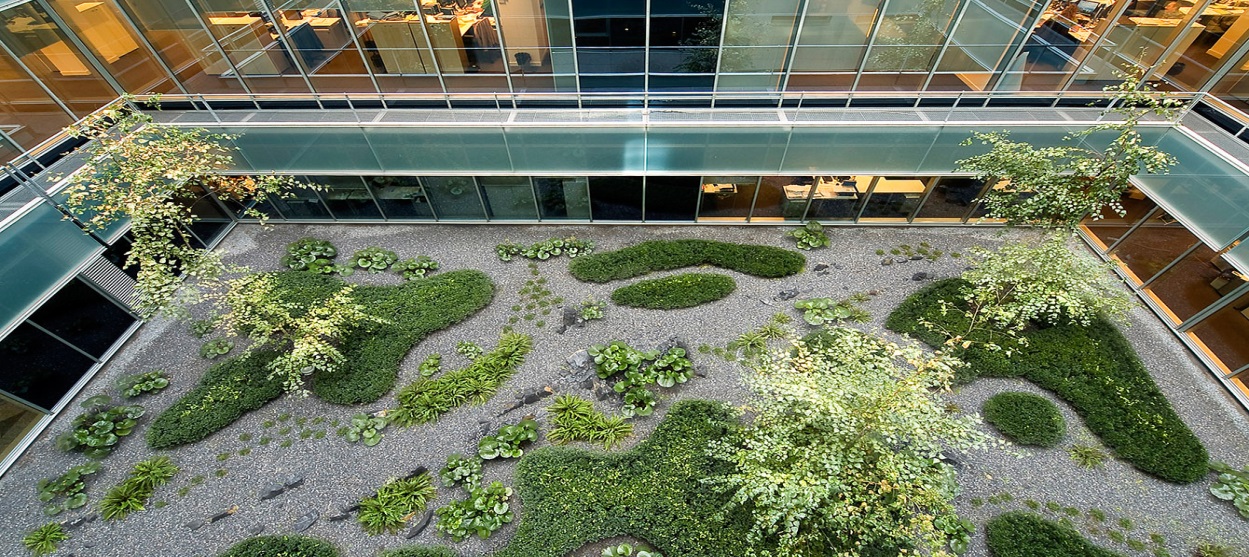
The objectives are to achieve better performance and functional requirements that fulfill quality measures such as reduction in energy consumption, customer satisfaction, and reduced operations and maintenance costs. Typically, workplace design can either promote employee productivity if the environment is made to support quality, style, and quantity in order to reduce absenteeism and turnover rates. As shown in figure 2, color and furnishings are the focus that maintains a constant appearance over time with visibility provided over five floors of the building as well as the heart of the building. A recognizable pattern of the building creates a small microclimate embedded in a unifying structure within the shapes of the design. Typically, the results show delicate ferns having Farfugium japonicum with large rounded leaves. Vertical elements emerge in the form of light silhouettes and white trunks of birches that are used as vertical elements. Typical stress management elements defined in the psychological impact theory consist of a range of biophilic positive elements that lead to high-quality indoor office environment. This has evidently been escalated in different workplaces around the globe, which has become a global office construction standard.
The Role of BREEAM in Building Sustainability
The sustainability principles of building construction using various models aim to provide environmental quality, efficient use of energy and materials, and effective resource utilization. Building Research Establishment Environmental Assessment Method (BREEAM) is a standard that provides guidelines for the construction of sustainable buildings in the UK and globally. Holmes and Hudson define sustainability using the four principles known as the futurity principle, environmental principle of the preservation of the ecosystem, energy, and resource conservation, equity principle that constitutes equal access to natural resources, and public participation principle that involved expert opinion on the construction of sustainable buildings.
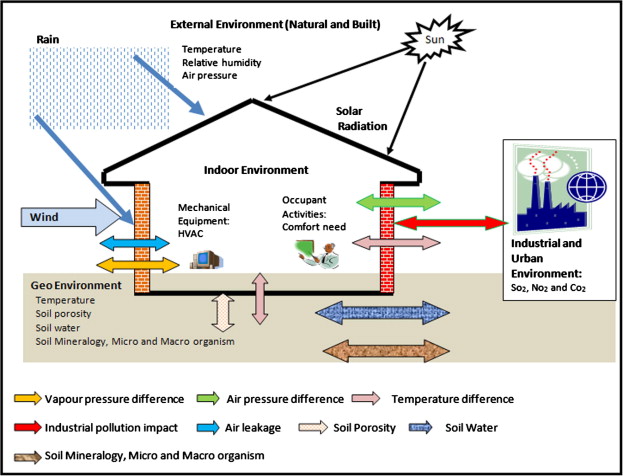
Broadly, environmental issues that affect buildings constitute the nine sustainability categories covered under BREEAM which consist of health and wellbeing, noise, lighting, water, waste and air quality. Besides sustainability improvements, figure 3 depicts external and internal environments with the internal environment designed to provide users with the comfort needed to carry out various activities. This evidently fosters sustainable behavior through design. Typically, BREEAM is an environmental assessment tool that has been widely used in the UK and adopted in other countries that aim to make the working environment better for the people. Buildings need to be certified to ensure that they meet the basic standards of fair, good, very good, or excellent. The scheme factors the three sections of asset based on the basis of inherent performance characteristics such as construction and services, building management which involves operational nature of the building, and occupier management that includes delivery of key outputs, which is based on scores related to minimum compliance requirements.
Benefits of Designing Interior Gardens for Office Buildings
Increase in productivity
In theory, office productivity environment as shown in figure 4 factors office occupier work patterns as reflective of the stressors in the working environment.
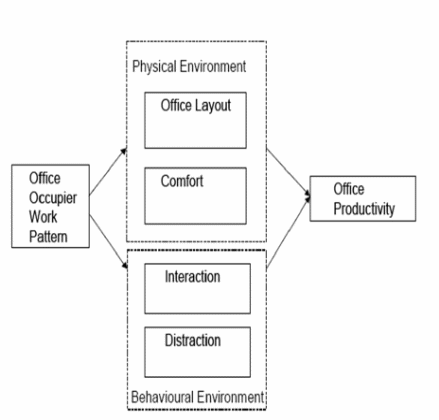
The link and effects between the physical environment that constituted office layout, interaction, comfort, distraction, and office layout with office productivity is clear. It is evident that distractions caused by interruptions, overall atmosphere, noise, crowding, and privacy distinctly affect office and business users. However, environmental services such as natural lighting, heating, ventilation, and artificial lighting and office layouts such as general storage, personal storage, and circulation of space, overall office layout, and position of colleagues have positive effects on the productivity of the employee.
It is imperative to note that overall comfort and cleanliness are the core elements that contributed to a decrease in stress. The details of the attributes of the physical environment lead to comfort by reducing the distance to natural light, breakout space, internal floor travel, air velocity, lighting, temperature, external views, and acoustics. All the elements could be derived from a well-designed garden with complete attributes of native and adaptive plants. Daily hassles, in theory, are deemed to be the sources of stress in the highly stressed work offices besides other happenings such as powerful events and cataclysmic phenomena. In this discourse, daily hassles constitute the sources of stress in the working environment. The main affinity for nature includes aesthetics, humanism that constitutes emotional attachment to nature, morals that deepens the connection between the human cycle of life and spiritual relations, and the ability to overcome negativity.
An Increase in Performance
The people working for Toyota Motor Corporation (Toyota) work in environments with low stressors that leads to increased employee creativity, problem-solving skills, innovation, economic outcomes, and increased productivity. The results show that interior gardens have a significant effect on the difference between mild and great business success. This is because workplace design connects nature with the people. Inherent was the removal of undesirable events that could act as sources of psychological stress. Results by Green Guide for Healthcare (GGHC) and the United States Green Building Council (USGBC) demonstrate that better performance can be achieved by increasing staff satisfaction and high probability of employees recuperating from stress.
Improved Health
Plants improve their health by absorbing and destroying certain organic chemicals through transpiration. Examples of workplaces with office gardens include the Genzyme Center in the USA which has been rated as an AIA Top Ten Green Project for 2004 as shown in figure 5.

The psychological impact theory emphasizes stress as a critical element that inhibits the productivity of employees. Research that evaluated the impact of plants in the workplace and especially among people with a lot of work showed that people increase pain and stress tolerance when working in an interior area with plant. Besides reducing general discomfort leads to changes in the total score of more stressed employees.
Inspiring Creativity
Several ideas have emerged which show the contribution of interior gardens for office buildings to fostering the creativity of individuals. This is consistent with the research by Dr. Roger Ulrich who is a behavioral scientist in the Texas A&M University based on the effects of psychological factors on individual creativity that factored 200 participants concluded that decreasing stress had a counterproductive effect of increasing innovation, critical thinking, and creativity.
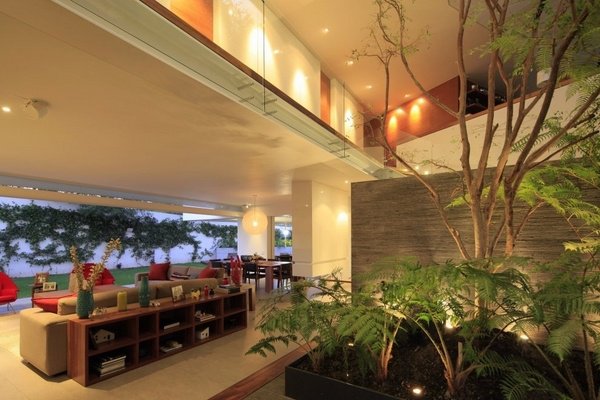
The results are reflected in the figure 6 where the interior gardens evidently connect nature with the office by adding add visual value to the interiors when placed at a specific location that allows the remaining space to accommodate the indoor garden. The rationale is that idea generation and creative performance, and problem-solving skills improve significantly when the interior landscape is improved with plants. Consistent with the psychological impact theory, it has been demonstrated that the emotional states of different people when positively enhanced using plants increase their thinking by calling into action the high order cognitive functioning of the mind.
Case studies
Case study 1
Google’s new Australian headquarters in Pyrmont opposite Star City Casino is one of the outstanding and well-pronounced case studies of interior office design that incorporates different aspects of the psychological impact theory. The new Australian headquarters in Pyrmont is one among many of Google’s globally famed workplaces with over 20 design themes including sustainability and compliance with the BREEAM construction building standards.
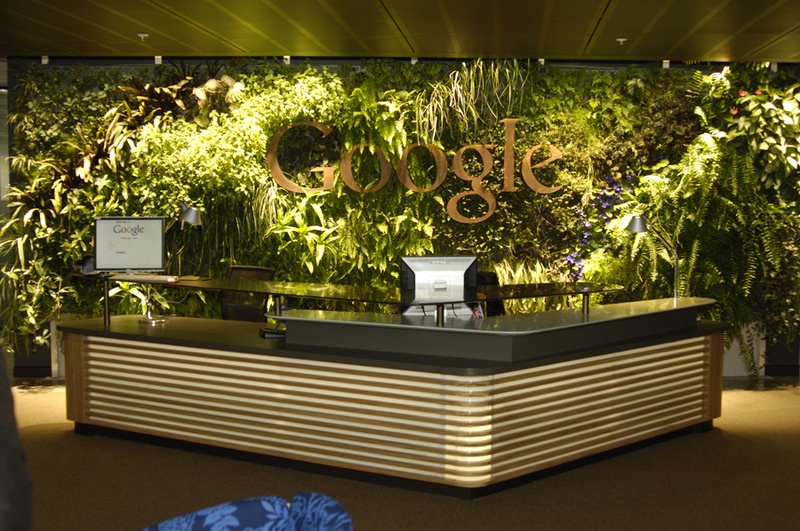
Figure 7 demonstrates an interior garden for an office building that incorporates different aspects of an improved physical environment. Stress factors are defined by the psychological impact theory such as noise that acts as a physical and psychological stimulus that happens due to the ambient work environment are addressed. The design factors aspects of environmental sensors such as the settings that indicate a natural setting of the site which is integrated with an external design review.
Case study
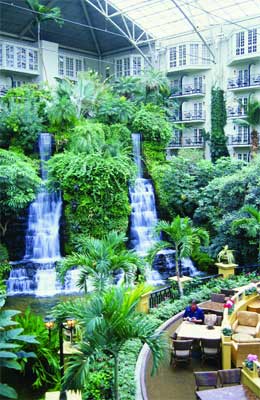
Figure 8 demonstrates the aspect of integrating landscape with interior design that provides examples of distinctive buildings in commercial centers with plants displayed on all levels of the building in the interior landscaping. Opryland Hotel, Nashville TN provides business and office users with a comfortable and enjoyable experience enabling them to cope with different environmental conditions that could cause negative stress. A critical analysis of the case study shows an energy-efficient building with indoor living plants that enhance the image, atmosphere, outdoor freshness, insulation from chemicals, and color that adds serenity to the user of the environment. The characteristics of the figure resonate well to create a high-performance workplace because it provides the view that satisfies the user.
Conclusion
While the problem of employee wellbeing is a significant one that can be tapped into to improve productivity, evidence shows that different organizations have identified stress and the sources of ‘stressors’ demonstrated in the psychological impact theory as critical inhibiting factors in workers’ productivity. Here, the level and severity of stress and its effects on workers’ productivity can be removed by integrating aspects of gardens into the interior design of business environments, which has been demonstrated to remove the adverse effects of unfamiliarity, duration, immanency, and suddenness. Adopting the concept of interior gardens is a global trend that has been adopted and implemented by companies such as Google and Apple among others. Letchworth Garden City among others demonstrates the benefits of interior gardens for office buildings that positively impact workers and business users to include improved air quality through improved humidity, enhancement of the worker’s wellbeing through the reduction of stress.
Works Cited
- Alkubaisi, Muwafaq Mohammed. “How can Stress Affect Your Work Performance? Quantitative Field Study on Qatari Banking Sector.” Business and Management Research vol. 1, no. 4,2015, pp. 99-102.
- Bazley, C., and Peter Vink. “Don’t forget time in environmental design.” Work vol. 1, no. 54, 2016, pp. 1025-1029.
- Edwards, Brian W., and Emanuele Naboni. Green buildings pay: Design, productivity and ecology. Routledge, 2013.
- Fisk, William J. “Health and productivity gains from better indoor environments and their relationship with building energy efficiency.” Annual Review of Energy and the Environment vol. 1, no. 25, 2000, pp. 537-566.
- Giedion, Sigfried. Space, time and architecture: the growth of a new tradition. Harvard University Press, 1967.
- Gray, Tonia, and Carol Birrell. “Are biophilic-designed site office buildings linked to health benefits and high performing occupants?” International journal of environmental research and public health vol. 12, no. 11, 2014, pp. 12204-12222.
- Gupta, Ar Priya V., and Ar Anjali V. Narad. “Tall Office Building Form to Attend Sustainability.” International Journal of Emerging Trends in Science and Technology vol. 5, no. 1, 2014.
- Hanák, Péter. The garden and the workshop: essays on the cultural history of Vienna and Budapest. Princeton University Press, 2014.
- Heinonen, Sirkka, and Matti Minkkinen. “Interpreting built cityscape: Deconstructing the metaphorical messages of futuristic buildings.” Futures vol. 1, no. 1, 2016.
- Holmes, John, and Gordon Hudson. “The application of BREEAM in corporate real estate: A case study in the design of a city centre office development.” Journal of Corporate Real Estate vol. 1, no. 5, 2003, 66-77.
- Keckley, Paul H., and Michelle Hoffmann. “Social networks in health care: Communication, collaboration and insights.” New York: Deloitte Center for Health Solutions voo. 1, no. 1, 2010.
- Kellert, Stephen R., Judith Heerwagen, and Martin Mador. Biophilic design: the theory, science and practice of bringing buildings to life. John Wiley & Sons, 2011.
- Kibert, Charles J. Sustainable construction: green building design and delivery. John Wiley & Sons, 2016.
- LaFromboise, Teresa, Hardin L. Coleman, and Jennifer Gerton. “Psychological impact of biculturalism: evidence and theory.” Psychological bulletin vol. 3, no. 114, 1993, pp. 395.
- Lohr, Virginia I., Caroline H. Pearson-Mims, and Georgia K. Goodwin. “Interior plants may improve worker productivity and reduce stress in a windowless environment.” Journal of Environmental Horticulture vol. 1, no. 14, 1996, pp. 97-100.
- Lottrup, Lene, Patrik Grahn, and Ulrika K. Stigsdotter. “Workplace greenery and perceived level of stress: Benefits of access to a green outdoor environment at the workplace.” Landscape and Urban Planning vol. 1, no. 110, 2013, pp. 5-11.
- Mangone, Giancarlo. Performative Microforests: Investigating the potential benefits of integrating spatial vegetation environments into buildings, in regards to the performance of buildings, their occupants+ local ecosystems. Diss. TU Delft, Delft University of Technology, 2015.
- Mohamad, Muslim Har Sani, Fazlin Ali, and Amizawati Mohd Amir. “Role of organisational culture on performance measurement practice: the case of Malaysian manufacturing firms.” Afro-Asian Journal of Finance and Accounting vol. 4, no. 3, 2013, pp. 297-318.
- Morrell, P., and F. Duffy. “The impact of office design on business performance.” Published by the Commission for Architecture & the Built Environment and the British Council for Offices vol. 1, no. 1, 2004.
- Schweber, Libby. “The effect of BREEAM on clients and construction professionals.” Building Research & Information vol. 2, no. 41, 2013, pp. 129-145.
- Smith, Richard M, R. M. Smith, K.J. Gaston, P.H. Warren & K. Thompson “Urban domestic gardens (V): relationships between landcover composition, housing and landscape.” Landscape Ecology vol. 2, no. 20,2005, pp. 235-253.
- Van Der Voordt, Theo JM. “Productivity and employee satisfaction in flexible workplaces.” Journal of Corporate Real Estate vol. 2, no. 6, 2004, pp. 133-148.
- Wyon, D. P. “The effects of indoor air quality on performance and productivity.” Indoor air vol. 7, no. 14, 2004, pp. 92-101.